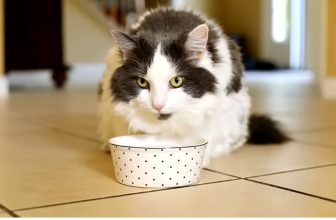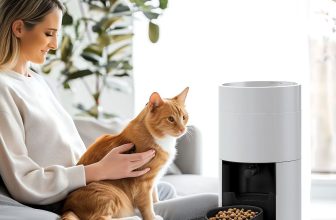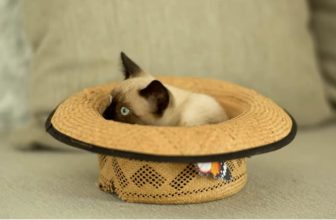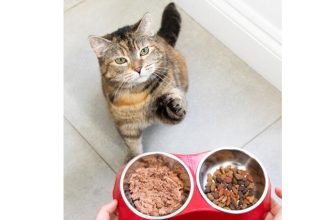Nutritious DIY Cat Food Recipes for Healthy Felines
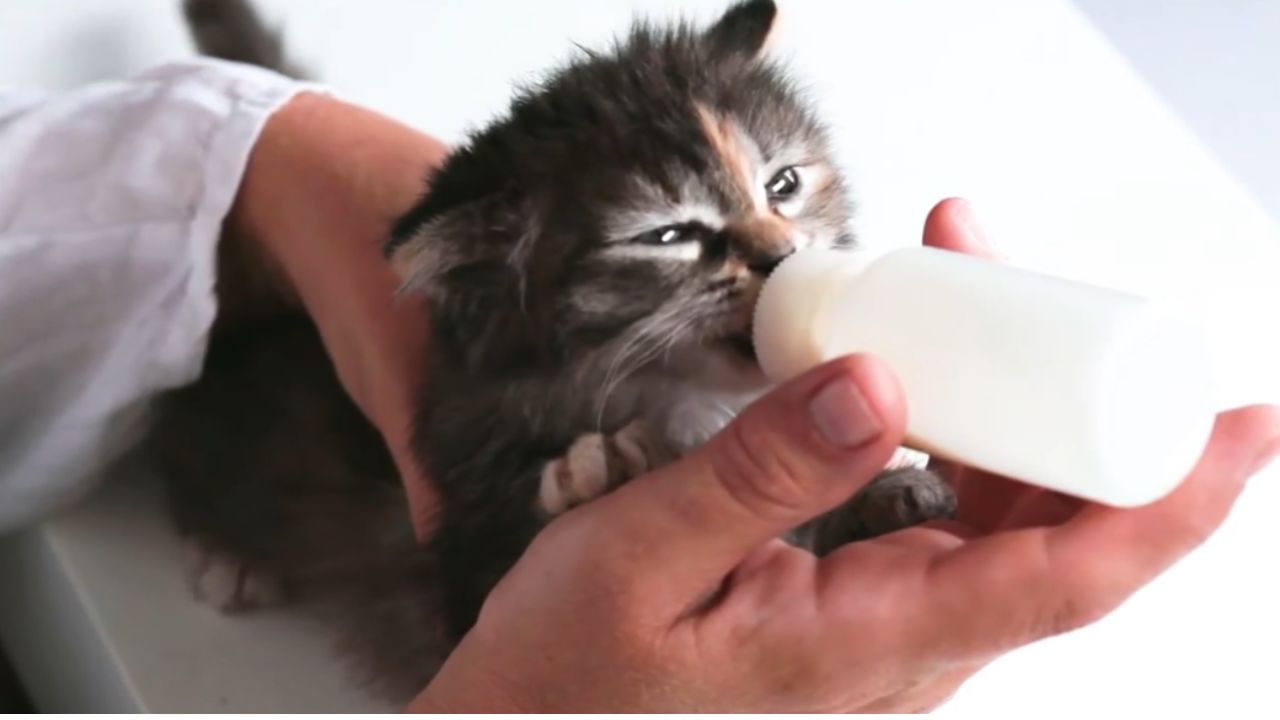
Are you worried about what’s really in your cat’s food? You’re not alone.
Many cat owners like you are turning to homemade recipes to ensure their furry friends get the best nutrition possible. Imagine knowing exactly what your cat is eating, down to the last ingredient. It’s time to take control of your cat’s diet and provide them with the healthiest options available.
In this post, you’ll discover simple and nutritious DIY cat food recipes that are not only good for your cat but also easy for you to prepare. Dive in and learn how you can make mealtime a healthier, happier experience for your beloved pet.
Benefits Of Homemade Cat Food
Feeding your cat with homemade meals can bring many advantages. Homemade cat food allows you to control every ingredient. This ensures your cat gets a balanced diet. Many store-bought cat foods contain preservatives. These can be harmful over time. By preparing food at home, you can avoid these unwanted additives. Additionally, you can cater to your cat’s specific dietary needs. This makes homemade meals a healthier choice.
Improved Health And Energy
Homemade meals can boost your cat’s health significantly. Fresh ingredients provide essential nutrients. These nutrients improve vitality and energy levels. Cats eating homemade food often show better skin and fur quality. Their coats can become shinier and smoother. Improved digestion is another benefit. Cats digest fresh food more easily than processed food.
Cost-effective Option
Making cat food at home can save money. Buying ingredients in bulk reduces costs. You also avoid spending on expensive brands. Homemade food can be more budget-friendly. This is especially true for households with multiple cats.
Tailored Nutrition
Every cat has unique needs. Homemade meals let you customize nutrition. You can adjust protein levels and add supplements. If your cat has allergies, it’s easier to avoid triggers. Tailored meals ensure your cat gets what they need. This can lead to a happier and healthier pet.
Stronger Bond With Your Pet
Preparing meals for your cat can strengthen your bond. Cats appreciate the effort and care you put into their food. They often show more affection. Cooking for your pet can be a rewarding experience. It enhances the connection between you and your cat.
Essential Nutrients For Cats
Cats are beloved companions, and their health is a priority for pet owners. Many are exploring DIY cat food recipes to ensure their furry friends get the best nutrition. Making cat food at home allows for control over ingredients and nutrients. Understanding the essential nutrients for cats is key to crafting balanced meals. Proteins, fats, vitamins, and minerals all play crucial roles in a cat’s diet. Each nutrient contributes to your cat’s overall health and well-being. This guide will help you understand and incorporate these nutrients into homemade cat food.
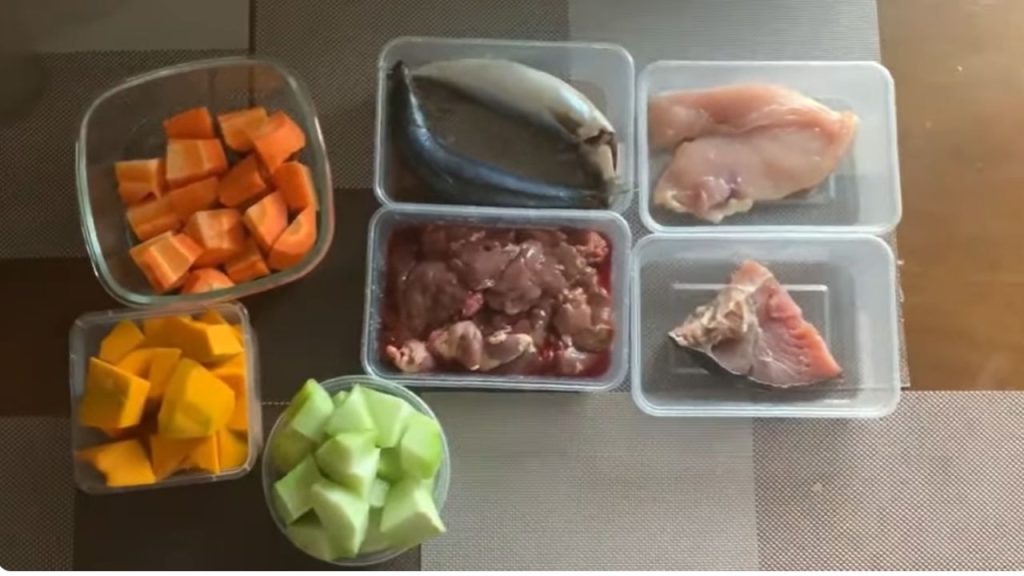
Proteins
Proteins are vital for a cat’s growth and development. They provide essential amino acids that cats need. A cat’s diet should be rich in animal-based proteins. Meat, fish, and poultry are excellent sources. Here are some protein-rich options:
- Chicken breast: Lean and nutritious.
- Turkey: High in protein and low in fat.
- Salmon: Provides Omega-3 fatty acids.
- Eggs: A complete source of protein.
Balancing protein intake is important. Too much protein can strain a cat’s kidneys. Use a variety of protein sources for a balanced diet. Homemade recipes should aim for 30-40% protein content. Ensure proteins are cooked properly to avoid health risks. Always consult a vet before making dietary changes.
Fats
Fats are another crucial element in a cat’s diet. They provide energy and help absorb vitamins. Healthy fats support skin and coat health. Here are some sources of good fats for cats:
- Fish oil: Rich in Omega-3 fatty acids.
- Chicken fat: Provides essential fatty acids.
- Flaxseed oil: A source of Omega-6 fatty acids.
Fats should make up 15-20% of a cat’s diet. Excessive fat intake can lead to obesity. It’s important to balance fat with other nutrients. Monitor your cat’s weight and adjust fat content as needed. Homemade recipes should include a mix of animal and plant-based fats. Always ensure fats are fresh and stored properly.
Vitamins
Vitamins are essential for a cat’s overall health. They support immune function and growth. Cats need a variety of vitamins, including:
- Vitamin A: Important for vision and immune health.
- Vitamin D: Supports bone health and calcium absorption.
- Vitamin E: Acts as an antioxidant.
- B Vitamins: Support energy production and metabolism.
Vitamins should be balanced in a homemade cat diet. Over-supplementation can be harmful. Use fresh ingredients that naturally contain vitamins. Liver and fish are good sources. Consult a vet to understand your cat’s vitamin needs. Proper storage of food preserves vitamin content. Regularly update recipes to maintain nutritional balance.
Minerals
Minerals are fundamental for maintaining health. They play roles in bone formation and fluid balance. Key minerals for cats include:
- Calcium: Essential for strong bones and teeth.
- Phosphorus: Works with calcium for bone health.
- Potassium: Supports nerve and muscle function.
- Magnesium: Important for enzyme function.
Mineral balance is crucial in a cat’s diet. Too much or too little can cause health issues. Use a variety of ingredients to ensure proper mineral intake. Meat, fish, and vegetables provide essential minerals. Homemade recipes should be carefully planned. Consult with a veterinarian for specific mineral requirements. Monitor your cat’s health and adjust recipes accordingly.
Basic Ingredients To Use
Creating nutritious DIY cat food recipes is a great way to ensure your feline friend receives a balanced diet. Understanding the basic ingredients to use is essential for crafting meals that support your cat’s health and energy levels. By combining the right meats, vegetables, grains, and supplements, you can make meals that not only taste good but also meet your cat’s dietary needs.
Meats
Meat is the cornerstone of any cat food recipe. Cats are obligate carnivores, which means they need meat to thrive. Chicken and turkey are excellent choices, as they are lean and easy to digest. Beef and lamb can also be used, but ensure they are cooked properly to avoid any health risks. For a more exotic option, rabbit or duck can be included in your recipes.
When preparing meat for your cat, it’s important to remove excess fat and skin. Cooking the meat thoroughly is crucial to eliminate bacteria and parasites. Here’s a simple guide:
- Use fresh or frozen meat.
- Remove bones before cooking.
- Cook meat until fully done.
- Chop into small, bite-sized pieces.
Consider mixing different meats to provide variety and ensure your cat gets a range of nutrients. Organ meats like liver and kidney can be added for extra vitamins and minerals, but should be used sparingly.
Vegetables
Vegetables offer vital nutrients and fiber that support digestion. While cats don’t need vegetables as much as humans do, they can still benefit from them. Carrots and peas are popular choices because they are mild and easy to prepare. Pumpkin is another good option, helping with digestive health.
Cooking vegetables before adding them to cat food is important. This makes them easier for cats to digest. Here are some tips:
- Wash vegetables thoroughly.
- Steam or boil until soft.
- Chop into small pieces.
- Mix with meats for balanced nutrition.
Remember, not all vegetables are safe for cats. Avoid onions and garlic, as they can be toxic. Moderation is key when including vegetables in your cat’s diet.
Grains
Grains can be included in cat food recipes, but they should not be the main ingredient. Rice and oats are common choices. They provide energy and some vitamins. Quinoa is another option, offering protein and essential amino acids. It’s important to use grains sparingly, as cats primarily need protein.
Preparing grains for cat food involves cooking them thoroughly to ensure digestibility:
- Use whole grains for more nutrients.
- Cook until soft and fully expanded.
- Mix with meat and vegetables.
Grains should complement the main protein sources, not replace them. Too many grains can lead to weight gain and reduce the nutritional value of the food.
Supplements
Supplements are essential for filling nutritional gaps in homemade cat food. Taurine is a crucial amino acid that cats need for heart and eye health. Fish oil can be added for omega-3 fatty acids, which support skin and coat health. Calcium and vitamin E are other useful additions.
When choosing supplements, it’s important to consult with a veterinarian. They can advise on the right dosages and combinations:
| Supplement | Benefit |
|---|---|
| Taurine | Heart and eye health |
| Fish Oil | Skin and coat health |
| Calcium | Bone health |
| Vitamin E | Antioxidant |
Adding supplements to your DIY cat food recipes can help ensure your cat receives a balanced diet. Consult a vet for personalized advice.
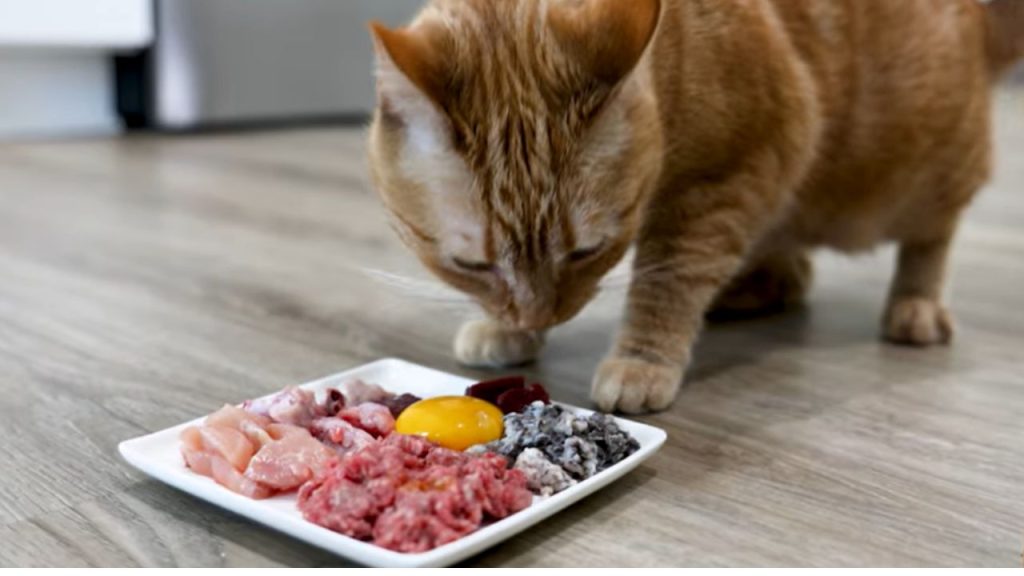
Simple Chicken Recipe
Creating nutritious DIY cat food recipes at home can be a rewarding task. It ensures your feline friend gets fresh and wholesome meals. A simple chicken recipe is a great place to start. Packed with protein and essential nutrients, chicken is both delicious and healthy. This recipe is not only easy to prepare but also cost-effective. By making cat food at home, you control the ingredients and avoid harmful additives. Let’s explore the ingredients and steps for this simple chicken recipe.
Ingredients Needed
For this recipe, you’ll need a few basic ingredients. Each one plays a vital role in your cat’s diet. Here’s a list of what you need:
- Chicken breast, pound, boneless, and skinless
- Carrots:1/2 cup, finely chopped
- Peas:1/4 cup, fresh or frozen
- Chicken broth:1/4 cup, low sodium
- Olive oil:1 teaspoon
- Fish oil capsule:1, optional for added omega-3
Chicken breast is the main source of protein. Carrots and peas provide essential vitamins and fiber. Use low-sodium chicken broth to keep it healthy. Olive oil adds healthy fats. Fish oil boosts omega-3, which is great for your cat’s coat and skin.
Preparation Steps
Follow these steps to prepare the simple chicken recipe for your cat:
- Prepare the chicken: Cut the chicken breast into small, bite-sized pieces.
- Cook the vegetables: In a pot, boil water and add carrots and peas. Cook until soft.
- Cook the chicken: In a pan, heat olive oil over medium heat. Add chicken pieces and cook until thoroughly done.
- Combine ingredients: In a bowl, mix cooked chicken, carrots, and peas.
- Add broth: Pour chicken broth over the mixture. Stir well to combine.
- Optional step: If using, squeeze the fish oil capsule over the mixture.
Let the mixture cool before serving it to your cat. Store leftovers in an airtight container in the fridge. Serve small portions to avoid overfeeding. Enjoy watching your cat relish this homemade meal!
Delicious Fish Recipe
Cats deserve the best nutrition to stay healthy and active. Making cat food at home can be a fun and rewarding experience. Nutritious DIY cat food recipes allow you to control the ingredients, ensuring your furry friend eats only the finest meals. One delightful recipe is the Delicious Fish Recipe. It’s tasty and full of nutrients that cats love. Fish is a great source of protein, which is vital for your cat’s growth and energy. Let’s dive into the details of this fish recipe and see how you can prepare a delicious meal for your cat.
Ingredients Needed
Creating a nutritious meal for your cat starts with choosing the right ingredients. For the Delicious Fish Recipe, you’ll need a selection of fresh and healthy items. Here’s what you’ll need:
- 1 cup of cooked fish– Salmon or tuna works best.
- 1/4 cup of cooked rice– Brown rice is preferred.
- 1/4 cup of carrots– Cooked and finely chopped.
- 1 tablespoon of fish oil– Adds healthy fats.
- Water– Enough to create a moist mixture.
Make sure all ingredients are fresh and cooked properly. Freshness is important for flavor and nutrition. Fish oil enhances the taste and provides essential fatty acids. Carrots add vitamins and fiber. Rice offers energy and helps with digestion. These ingredients, when combined, create a balanced and delightful meal for your cat.
Preparation Steps
Preparing the delicious fish recipe is simple and quick. Follow these steps to make a tasty meal for your cat:
- Start by cooking the fish. Steam or boil it until soft and flaky.
- Cook the rice according to package instructions. Use brown rice for extra nutrients.
- Steam the carrots. Chop them finely once they’re soft.
- Combine the fish, rice, and carrots in a bowl. Mix well.
- Add the fish oil to the mixture. Stir until evenly distributed.
- Pour a small amount of water. Ensure the mixture is moist but not watery.
- Serve in small portions. Store leftovers in the refrigerator.
Cooking the fish ensures it’s safe for your cat to eat. Mixing the ingredients evenly helps your cat enjoy every bite. Adding water keeps the meal moist and easy to chew. Serving in small portions prevents overeating. Follow these steps to make a delicious and nutritious meal for your cat.
Nutritious Beef Recipe
Caring for a cat means providing balanced nutrition. Preparing homemade cat food ensures your feline friend gets quality ingredients. Nutritious DIY cat food recipes can be a healthy option. The beef recipe offers protein and essential nutrients. Making it at home guarantees freshness and avoids harmful additives. Follow the instructions to serve a wholesome meal.
Ingredients Needed
Creating nutritious cat food requires specific ingredients. Each plays a vital role in providing balanced nutrition. Below is a list of what you’ll need:
- Lean beef:500 grams of lean beef, rich in protein.
- Carrots:100 grams, offering vitamins and fiber.
- Peas:100 grams, packed with vitamins and minerals.
- Brown rice:50 grams, a good source of carbohydrates.
- Olive oil:1 tablespoon, for healthy fats.
- Water cups, essential for cooking and moisture.
These ingredients create a balanced meal. They supply protein, vitamins, and healthy fats. It helps in maintaining your cat’s health and energy levels. Always use fresh and clean ingredients for the best results.
Preparation Steps
Preparing the beef recipe is simple. Follow these steps to ensure a nutritious meal:
- Chop the beef: Cut the beef into small pieces for easy cooking.
- Boil the rice: Cook brown rice in water until soft and fluffy.
- Steam the vegetables: Steam carrots and peas until tender.
- Mix ingredients: Combine beef, rice, carrots, and peas in a bowl.
- Add olive oil: Drizzle olive oil over the mixture for added nutrients.
- Cool and serve: Let the mixture cool before serving to your cat.
Ensure the food is at room temperature. Cats prefer slightly warm meals. This recipe provides a balanced diet. It supports your cat’s health and vitality. Always store leftovers in the fridge.
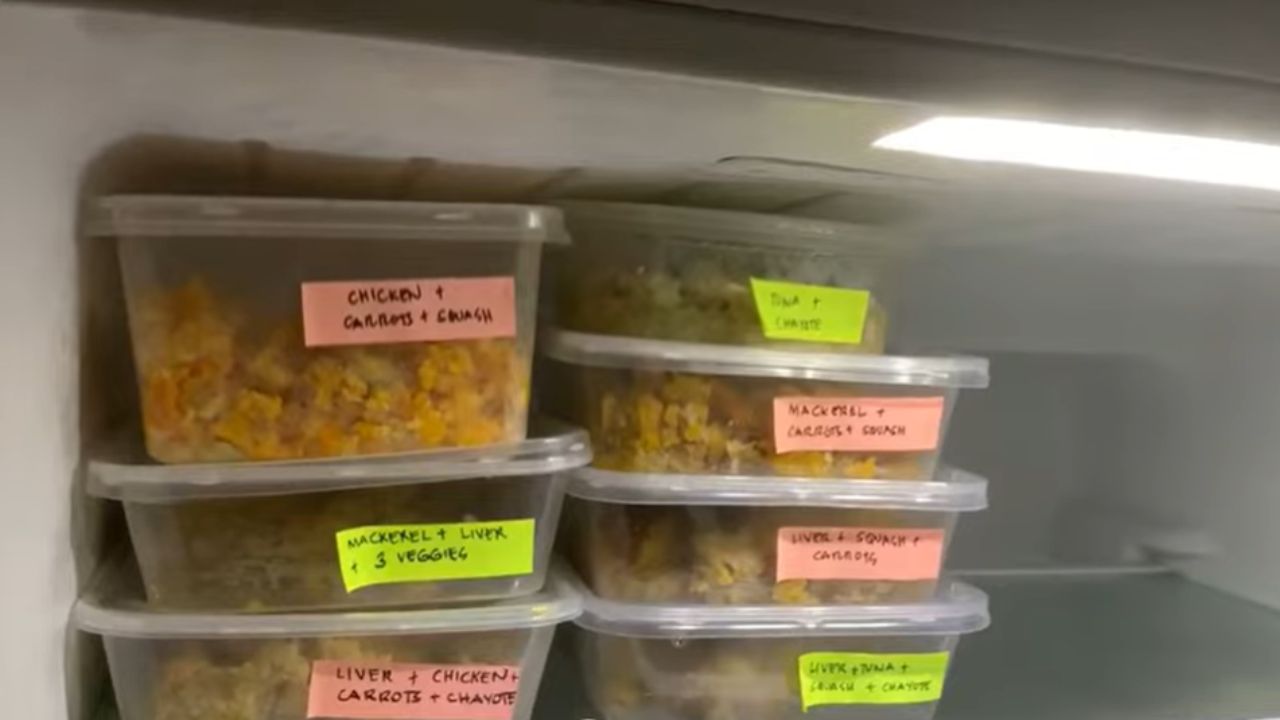
Vegetarian Options
Cats need a balanced diet to stay healthy. Some cat owners prefer making their cat food. This way, they know exactly what their pet is eating. Vegetarian options are becoming popular. They can be nutritious if done right. These recipes should meet a cat’s nutritional needs. It is important to use the right ingredients. Preparing homemade cat food requires careful planning. Understanding what goes into the food helps keep your cat healthy and happy. Let’s explore how to make vegetarian cat food at home.
Ingredients Needed
Creating vegetarian cat food requires some specific ingredients. These ingredients provide the nutrients cats need. Here is a list of important items:
- Chickpeas: A good source of protein and fiber.
- Carrots: Rich in vitamins and support digestion.
- Spinach: Provides iron and calcium.
- Oats: Offers energy and supports heart health.
- Rice: Easy to digest and provides carbohydrates.
- Olive oil: It contains healthy fats.
- Vitamin supplements: Ensure all essential nutrients are included.
These ingredients should be fresh and of high quality. It’s important to consult with a vet. They can confirm the recipe meets your cat’s nutritional needs. Remember, cats have specific dietary requirements. Using these ingredients, you can create a balanced vegetarian meal for your cat.
Preparation Steps
Preparing vegetarian cat food is simple but requires attention. Follow these steps to make a nutritious meal:
- Soak chickpeas overnight in water. This makes them soft and easy to cook.
- Cook rice until it’s tender. Use twice the amount of water as rice.
- Boil carrots until they are soft. This helps in easy digestion.
- Steam spinach lightly. Avoid overcooking to keep nutrients intact.
- Blend chickpeas into a smooth paste. Add a little water if needed.
- Mix all cooked ingredients in a large bowl.
- Add olive oil and vitamin supplements. Stir well to combine.
- Portion the mixture into serving sizes. Store in the fridge for up to three days.
Always serve food at room temperature. This is more appealing to cats. Check with a vet regularly. Ensure your cat’s diet supports their health.
Storage Tips
Creating homemade cat food can be a rewarding experience. It ensures your furry friend gets the best nutrition. Choosing the right ingredients is crucial. Fresh meat, vegetables, and grains can boost your cat’s health. Making food at home also allows you to avoid harmful additives. Proper storage of homemade cat food is essential. It keeps the food fresh and safe for your pet.
Refrigeration
Keep homemade cat food in the refrigerator. It should stay fresh for up to 3 days. Use airtight containers to maintain freshness. Label the containers with the date of preparation. This helps to track how long the food has been stored.
Freezing
For longer storage, consider freezing the cat food. Divide the food into small portions. This makes thawing easier and quicker. Use freezer-safe bags or containers. Label them with the date for easy tracking. Frozen food can last up to three months.
Thawing Safely
Thaw the cat food in the refrigerator. This method is the safest. Avoid leaving food at room temperature. It can develop harmful bacteria. Once thawed, use the food within 24 hours. Discard any leftovers that have not been eaten.
Storage Containers
Choose containers that are airtight and non-toxic. Glass or BPA-free plastic containers are best. They help preserve the flavor and nutrients of the food. Make sure they are easy to clean and reuse.
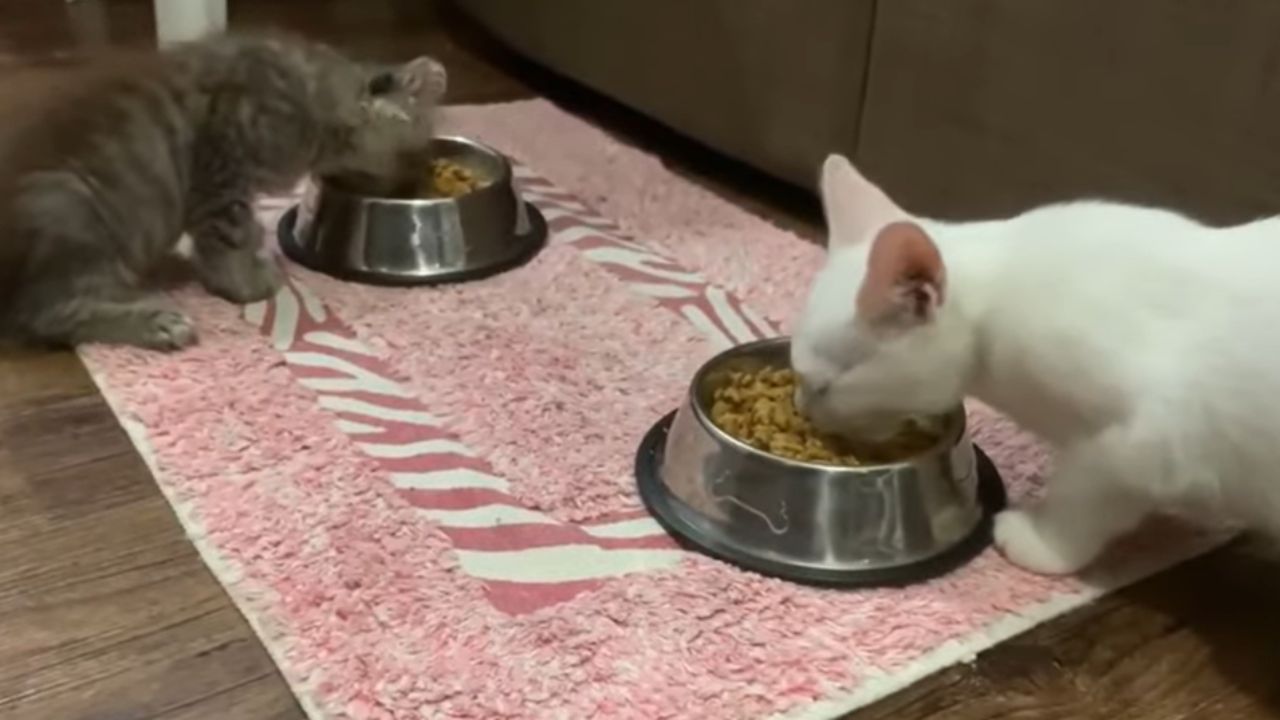
Common Mistakes To Avoid
Crafting homemade cat food can be a rewarding experience. It lets owners control what their feline friends consume. Many people make mistakes when preparing food. These errors can affect health and nutrition. Knowing these pitfalls helps in providing the best for your cat. Avoiding these mistakes ensures a healthy and happy pet.
Using Inappropriate Ingredients
Cats have unique dietary needs. Ingredients suitable for humans might not be right for them. Avoid using garlic, onions, and chocolate as they can be harmful. Raw fish and bones can also pose risks. Consult a vet for safe ingredient choices.
Ignoring Nutritional Balance
A balanced diet is crucial for your cat’s health. Homemade recipes must contain proteins, fats, and vitamins. Cats need taurine, an essential amino acid. Taurine deficiency can lead to serious health issues. Always check recipes for nutritional completeness.
Overfeeding Or Underfeeding
Portion control is important. Overfeeding leads to obesity, while underfeeding can cause malnutrition. Know your cat’s weight and age. Calculate the right amount of food accordingly. Regularly monitor your cat’s weight and adjust portions as needed.
Neglecting Food Safety
Proper food handling prevents contamination. Wash hands and utensils before preparing meals. Store food in airtight containers. Refrigerate leftovers promptly to maintain freshness. Avoid foods that spoil quickly.
Lack Of Variety
Cats appreciate variety in their meals. Feeding the same recipe daily can lead to boredom. Introduce different ingredients now and then. Mix up flavors to keep meals interesting. This helps in maintaining a balanced diet.
Consulting With Veterinarians
Creating homemade cat food can be rewarding. It offers control over ingredients and ensures your furry friend gets the best nutrition. But, expert advice is crucial. Cats have unique dietary needs. Consulting with veterinarians ensures their health and well-being. This helps avoid common nutritional pitfalls in homemade diets.
Importance Of Professional Advice
Veterinarians provide essential guidance. They understand cats’ nutritional needs deeply. Homemade recipes need balance. A vet ensures all vital nutrients are included. This prevents health issues.
Consulting a vet helps tailor recipes. Each cat is unique. Age, health, and activity level matter. Personalized advice guarantees your cat’s diet supports their lifestyle.
Common Nutritional Needs For Cats
Cats are obligate carnivores. They need a high protein content in their diet. Animal proteins are crucial. They require specific amino acids, like taurine.
Fats are essential too. They provide energy and support skin health. Omega-3 and omega-6 fatty acids are important.
Vitamins and minerals can’t be overlooked. Calcium, vitamin D, and vitamin A support bone and eye health. A balanced diet is key.
Potential Risks Of Homemade Diets
Homemade diets may lack important nutrients. Nutritional deficiencies can lead to health problems. Vitamin deficiency affects vision and skin. Lack of taurine impacts heart health.
Preparing food incorrectly poses risks. Cooking methods affect nutrient quality. Improper storage leads to spoilage. Always consult a vet for safe food practices.
How To Find A Reliable Veterinarian
Finding a good vet is crucial. Ask for recommendations from friends with pets. Look for reviews online. Good vets communicate clearly and listen to concerns.
Choose a vet with experience in nutrition. They should be knowledgeable about homemade diets. Regular visits ensure your cat’s health stays on track.
Frequently Asked Questions: Nutritious Diy Cat Food Recipes
What Are The Benefits Of Homemade Cat Food?
Homemade cat food can be healthier. You control ingredients. No preservatives. Tailored to your cat’s needs.
Which Ingredients Are Safe For Cat Food Recipes?
Safe ingredients include chicken, fish, rice, and carrots. Avoid onions, garlic, and chocolate. Check with your vet.
How Often Should I Feed My Cat Homemade Food?
Feed homemade food twice daily. Keep portions small. Monitor your cat’s weight and health regularly.
Can Homemade Recipes Improve My Cat’s Health?
Yes, they can. Balanced recipes provide essential nutrients. Can improve coat, energy, and overall well-being.
Is It Costly To Prepare Homemade Cat Food?
Not necessarily. Buying bulk ingredients can save money. Choose affordable proteins and grains. Plan meals wisely.
Conclusion
Creating nutritious DIY cat food is rewarding. Your feline friend deserves the best. Homemade recipes offer control over ingredients. You ensure freshness and quality. Start with simple recipes. Gradually expand your options. Experiment with different flavors. Cater to your cat’s taste preferences.
Remember to consult a vet. Ensure balanced nutrition for your pet. Happy cats mean happy owners. Enjoy the bonding time in the kitchen. Your dedication pays off. A healthy cat is a joyful companion. Try these recipes today. Give your cat the love it deserves.



